Last Tuesday night, my 6-year-old asked me to tell her Cinderella, but “make it different this time, Mom.” So there I was, scrambling to reinvent a story I’ve known since I was her age. I ended up turning the glass slipper into magic sneakers that helped Cinderella run her own business. My daughter loved it, but it got me thinking—we’re all just trying to find fresh ways to tell the same timeless stories that have captivated humans for centuries.
That moment really stuck with me: the best once upon a time stories aren’t just about following the same old formulas. They’re about finding new ways to capture wonder, teach important lessons, and connect with people across generations. And honestly, with over 500,000 copies of the storytelling card game “Once Upon a Time” sold worldwide (Atlas Games), I’m clearly not the only one obsessed with reinventing these classic tales.

Whether you’re hunting for the perfect bedtime story, planning something engaging for your classroom, or trying to write your own fairy tale masterpiece, choosing the right once upon a time stories can make your head spin. The options have exploded way beyond traditional fairy tales to include stories from different cultures, interactive adventures, and modern retellings that tackle today’s challenges while keeping that timeless magic we all love.
Understanding different story structures can help you see how folktale story examples share common elements with modern fairy tale adaptations.
Table of Contents
-
What You Need to Consider When Choosing Once Upon a Time Stories
-
Classic Fairy Tale Retellings
-
Multicultural & Diverse Stories
-
Fantasy & Adventure Stories
-
Contemporary & Urban Fantasy
-
Interactive & Educational Stories
-
Original & Innovative Stories
-
How These Stories Measure Against Key Selection Criteria
-
Transform Your Storytelling with Nairrate
-
Final Thoughts
TL;DR
-
Here’s what really matters when picking once upon a time stories: good story flow, right fit for your kid’s age, respectful representation, solid writing, deeper meaning, and learning value
-
Classic retellings give you familiar comfort with fresh twists, while multicultural stories open up whole new worlds and perspectives
-
Fantasy adventures deliver that satisfying quest feeling, while modern urban fantasy mixes magic with everyday life
-
Interactive educational stories might slow down the story flow a bit, but kids love getting to participate and learn
-
Original innovative stories challenge everything you expect but work best for more advanced readers
-
Each type serves different needs—some are pure entertainment, others are great for learning, and some help kids understand different cultures
What You Really Need to Think About When Choosing Once Upon a Time Stories
Look, picking the right once upon a time stories doesn’t have to be rocket science, but there are definitely some things worth considering. After years of reading to kids, teaching, and watching stories either totally captivate audiences or completely bomb, I’ve learned there are six key things that make the difference between a story that works and one that doesn’t.
Story Flow & How It All Hangs Together
The best once upon a time stories give you that comfortable feeling of “oh, I know how this goes” while still managing to surprise you. You want stories that follow familiar patterns—you know, the setup, the problem, the solution—but throw in some unexpected twists that keep everyone engaged.
I learned this the hard way when I tried to tell my nephew a “modern” Three Little Pigs story where they all just called the police on the wolf. He was NOT having it. Kids (and adults, honestly) need that satisfying story rhythm, but they also want something fresh. The best stories nail this balance by keeping the bones of what we love while changing up the details in meaningful ways.
Think about pacing too—does the story rush through the important character moments, or does it drag on forever with boring setup? The stories that really work have this great rhythm that echoes how people naturally tell stories out loud, with repetition and build-up that makes you want to keep listening.
Getting the Age Thing Right
Here’s what I’ve learned works for different ages: Little kids (3-5) want the same story told the exact same way every single time. Seriously, change one word and they’ll call you out on it. They also need clear good guys and bad guys, simple vocabulary, and stories that end happily.
Elementary schoolers (6-8) are ready for characters who make mistakes but still figure things out. They can handle more complex emotions and problems, but they still need hope and solutions they can believe in.
Middle schoolers (9-12) want stories that don’t talk down to them. They can handle moral gray areas, complicated family situations, and characters who aren’t perfect. They’re also starting to care about seeing themselves reflected in stories.
But here’s the thing—age appropriateness isn’t just about reading level. You need to think about whether your audience can emotionally handle what the story throws at them. I made this mistake once with a story that was supposedly “age-appropriate” but way too scary for bedtime. Nobody slept that night.
When you’re looking for stories for younger kids, checking out best bedtime stories for kids can give you ideas for fairy tale elements that work well for different ages.
|
Age Group |
What They Really Want |
Themes That Work |
How Complex to Get |
|---|---|---|---|
|
Ages 3-5 |
Same story every time, clear heroes/villains |
Sharing, friendship, basic feelings |
Simple words, lots of repetition |
|
Ages 6-8 |
Characters they can relate to, problems they understand |
Solving problems, family love, being brave |
Medium vocabulary, straightforward plots |
|
Ages 9-12 |
Stories that respect their intelligence, diverse characters |
Finding yourself, fairness, caring about the environment |
More complex, multiple storylines okay |
|
Ages 13+ |
Real issues, cultural depth, contemporary relevance |
Social problems, relationships, growing up |
Advanced language, nuanced themes |
Respectful Representation & Not Messing Up Cultures
This one’s huge. You want to make sure the stories you choose don’t perpetuate harmful stereotypes or misrepresent cultures. I’ve seen too many “multicultural” stories that just slap on surface-level details without really understanding or respecting the cultures they’re supposedly representing.
The best multicultural stories come from authors who either belong to the cultures they’re writing about or have worked closely with people from those communities. Real representation goes way deeper than just changing character names or adding cultural costumes—it captures genuine values, storytelling traditions, and perspectives.
My friend Sarah, who teaches second grade, swears by checking if multicultural stories have been endorsed by cultural organizations or written by people from those communities. It makes a huge difference in authenticity and helps avoid those cringe-worthy moments when you realize a story is basically just reinforcing stereotypes.
Good Writing That Doesn’t Talk Down to Anyone
Even stories for little kids should be well-written. Good fairy tale writing shows you what’s happening instead of just telling you everything directly. It creates vivid pictures in your mind and develops characters who feel real even when they’re dealing with magic and impossible situations.
Pay attention to dialogue—does it sound like how people actually talk, or does it feel forced and fake? The best fantasy writing makes the impossible feel natural and inevitable. You shouldn’t have to over-explain every magical element because the author trusts you to understand from context.
I’m always impressed by stories that respect their audience’s intelligence, regardless of age. Kids can tell when you’re dumbing things down for them, and they don’t appreciate it any more than adults do.
Deeper Meaning & Why It Matters Today
The stories that really stick with you have layers. Sure, they’re entertaining on the surface, but they also say something meaningful about life, relationships, or how to handle challenges. Modern audiences appreciate stories that address real issues while keeping that sense of hope and wonder that makes fairy tales timeless.
Understanding how story theme examples work can help you spot the deeper meanings in fairy tale retellings and choose stories that resonate with contemporary readers.
The best once upon a time stories for today’s world tackle current problems—like social media pressure, environmental issues, or family dynamics—while maintaining the magical elements that make these stories special. They help us process complicated real-world stuff through the safe framework of “once upon a time.”
Learning Value That Doesn’t Feel Like School
Great educational stories sneak the learning in so smoothly that kids don’t even realize they’re absorbing important lessons. This might be moral guidance, cultural insights, historical context, or even academic skills, but it should never feel like a disguised textbook.
The stories that work best generate conversations and questions. After you finish reading, you find yourself talking about the characters’ choices, the problems they faced, or how the story connects to real life. That’s when you know you’ve found something special—when the story keeps working even after “the end.”
Classic Fairy Tale Retellings
These five updated classics take the stories you grew up with and give them fresh life for today’s readers. They keep the magic and core lessons that made these tales timeless while addressing modern concerns and empowering characters in ways that feel relevant now.
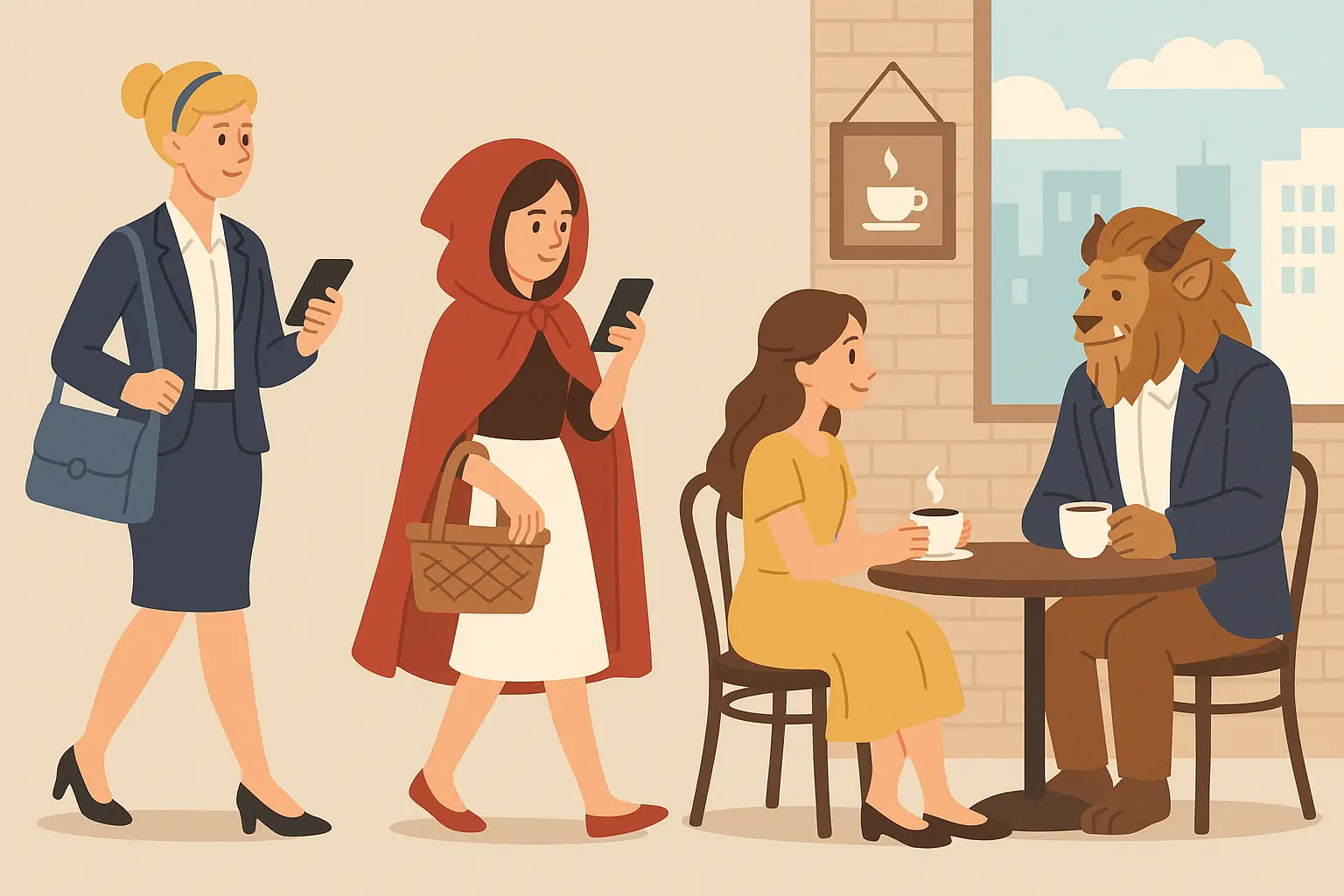
1. Cinderella Stories That Actually Make Sense
The newer Cinderella stories are so much better than the old “wait around for Prince Charming” version. Now Cinderella actually does stuff—she’s smart, she stands up for herself, and she doesn’t need rescuing. These stories tackle real issues like economic inequality, workplace harassment, and finding your own worth instead of waiting for someone else to validate you.
These days, you’ll usually see Cinderella dealing with problems like student loans, job discrimination, or complicated family dynamics. The “fairy godmother” might be a mentor, a support group, or just Cinderella finally finding her confidence. The makeover scenes focus on internal growth rather than just getting a pretty dress, though the visual transformation still symbolizes that inner change.
Trust me on this one—”Ella Enchanted” by Gail Carson Levine is pure gold. It reimagines Cinderella as someone cursed with obedience who has to find creative ways to resist harmful commands while staying true to her values. Ella’s journey from being pushed around to taking control of her life shows how classic tales can empower modern readers without losing their essential charm. Plus, it’s genuinely funny and engaging.
2. Beauty and the Beast Stories About Real Connection
These retellings dig into what it really means to see past appearances and connect with someone authentically. The “beast” character might be dealing with depression, social anxiety, or physical differences, while the “beauty” learns that real attraction goes way deeper than surface looks.
Modern versions often examine how society’s beauty standards mess with both characters’ heads. The story becomes less about “fixing” the beast and more about two people learning to accept themselves and each other. I love how these versions include diverse representation and challenge those old-school gender roles.
You know that moment when a kid asks “But why does she fall in love with someone who imprisoned her father?” Yeah, these new versions actually address that and give both characters agency in their relationship.
3. Little Red Riding Hood for the Digital Age
Contemporary versions turn Red into a problem-solver while exploring modern safety concerns. The “wolf” might represent online predators, manipulative relationships, or internal fears that Red has to learn to recognize and overcome. Finally, stories where Red actually uses her brain instead of just wandering naively into danger.
These retellings focus on teaching practical safety skills while keeping the adventurous spirit. Red becomes someone who uses intelligence and preparation rather than needing a woodsman to rescue her. The forest might be transformed into urban environments, school hallways, or even digital spaces.
4. Sleeping Beauty Stories About Consent and Agency
These stories tackle themes of consent, personal agency, and awakening to your own power. The “curse” might represent depression, societal pressure, or limiting beliefs, while the “awakening” symbolizes taking control of your own life and choices.
Modern versions completely eliminate that creepy non-consensual kiss element (thank goodness) and instead focus on the protagonist’s journey toward self-awareness and active participation in their own story. The spinning wheel becomes whatever threatens to limit the character’s potential—family expectations, social media pressure, or self-doubt.
5. Snow White in the Age of Social Media
These adaptations explore jealousy, self-image, and social media influence while addressing modern beauty standards and authentic self-worth. The magic mirror becomes Instagram, Snapchat filters, or that constant comparison culture that affects everyone’s self-esteem.
If you’ve ever tried explaining to a kid why the queen cares so much about being “the fairest of them all,” you’ll appreciate how these updates make that obsession feel relevant and understandable. Contemporary Snow White stories often show how jealousy and competition between women can be overcome through solidarity and mutual support. The seven companions might be a diverse friend group or support network that helps Snow recognize her value beyond appearance.
Multicultural & Diverse Stories
These four categories showcase incredible storytelling traditions from around the world. They offer authentic cultural perspectives while exploring universal themes that connect all of us—wisdom, courage, family bonds, and spiritual growth—through different cultural lenses and storytelling styles.
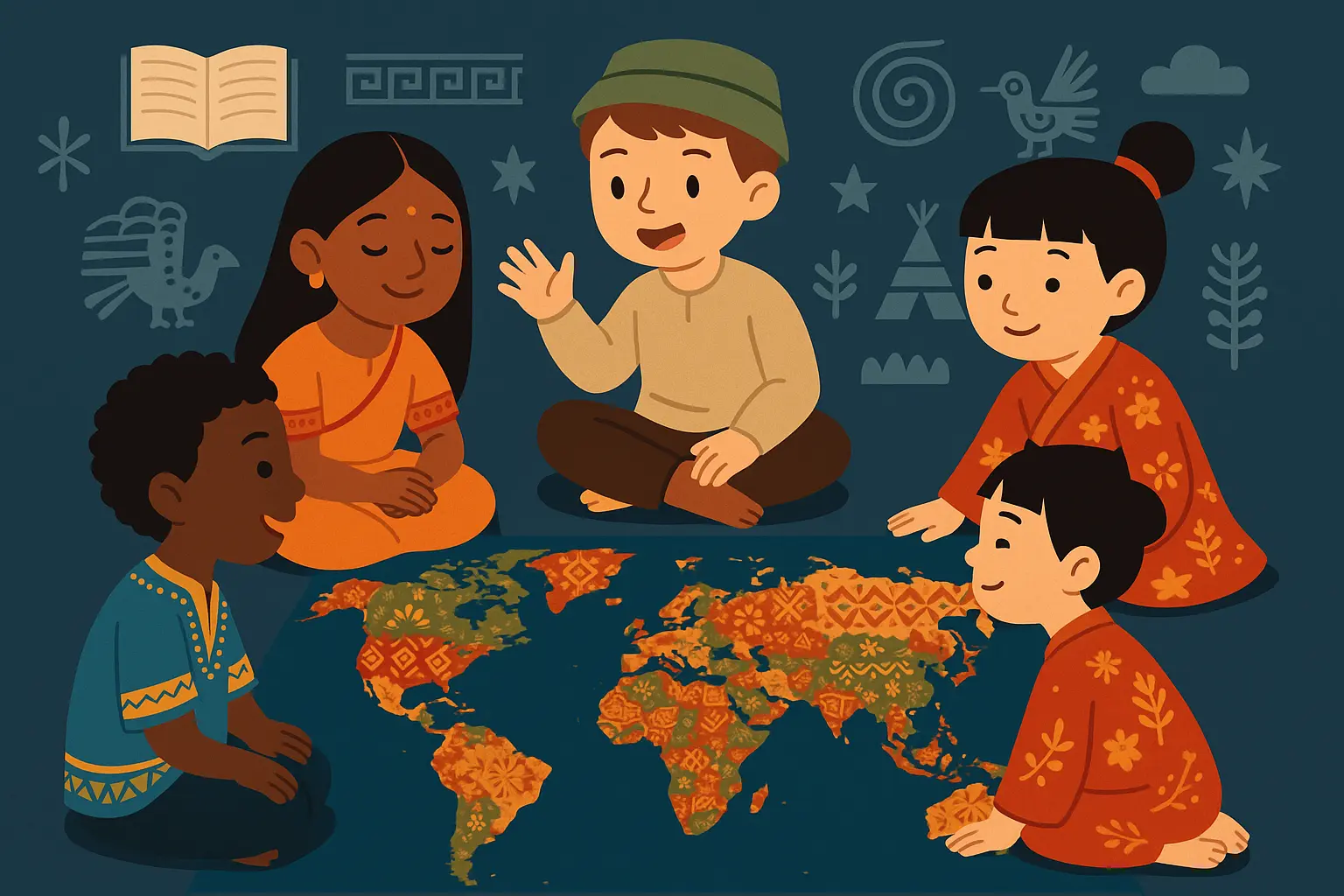
6. African Folktale Collections That Are Pure Genius
These stories featuring Anansi the spider, creation myths, and wisdom tales are absolutely brilliant at teaching life lessons through clever protagonists and complex moral situations. They emphasize using your brain over brute strength, working together instead of going it alone, and respecting the wisdom found in nature and community elders.
Anansi stories particularly excel at showing how smaller, seemingly weaker characters can outsmart bigger opponents through creativity and intelligence. My daughter’s favorite part is when Anansi tricks someone who’s being greedy or mean—kids love seeing justice served through cleverness rather than violence.
Modern adaptations keep that wonderful call-an
Modern adaptations keep that wonderful call-and-response feel of oral storytelling while tackling contemporary issues like bullying, environmental conservation, or social justice. The rhythm and repetition make these stories incredibly engaging for read-alouds.
7. Asian Fairy Tale Collections That Expand Your World
Stories from Chinese, Japanese, Korean, and Southeast Asian traditions feature dragons, magical transformations, and themes of honor, family duty, and spiritual growth. These narratives often follow different patterns than Western fairy tales, which can initially surprise readers but ultimately enriches their understanding of how stories can work.
Dragon characters typically represent wisdom and protection rather than something to defeat, which is refreshing. Transformation stories explore identity, sacrifice, and the relationship between who you are inside and how you appear outside. Many tales emphasize respecting elders, fulfilling family obligations, and maintaining harmony between human communities and nature.
These stories often follow circular rather than linear patterns, emphasizing community responsibility over individual achievement. It’s a different way of thinking about storytelling that can really expand kids’ perspectives.
8. Latin American Magical Realism That Feels Like Real Magic
These stories blend everyday reality with magical elements in ways that feel completely natural. They feature strong cultural traditions, multi-generational family bonds, and the power of storytelling itself. Magical realism allows extraordinary events to happen in ordinary settings, creating narratives where the impossible feels expected and wonderful.
Family relationships often span multiple generations, with ancestors playing active roles in contemporary events. Food, music, and cultural celebrations become vehicles for magic and connection. These stories frequently address themes of immigration, cultural identity, and maintaining traditions while adapting to new places.
The magic doesn’t feel separate from daily life—it’s woven into cooking, family gatherings, and community celebrations in ways that make you wish your own family traditions were this enchanted.
9. Native American Legend Adaptations Done Right
Traditional stories retold with respect and authenticity feature animal spirits, natural wisdom, and the interconnectedness of all living things. These narratives emphasize humanity’s responsibility as caretakers of the natural world and the importance of living in harmony with all creatures.
Animal characters serve as teachers and guides rather than just plot devices. The stories often explain natural phenomena while conveying lessons about respect, humility, and community responsibility. Modern adaptations address contemporary environmental challenges while maintaining traditional spiritual perspectives and storytelling methods.
Fair warning: make sure you’re choosing versions created by or in consultation with Native American communities. There are unfortunately many appropriated versions out there that miss the mark entirely.
Fantasy & Adventure Stories
These four adventure categories deliver epic quests and magical encounters that test characters’ courage, wisdom, and moral character. They explore themes of friendship, personal growth, and environmental responsibility through engaging fantasy frameworks that make even reluctant readers want to keep turning pages.
10. Dragon Quest Adventures That Flip the Script
Epic tales feature brave heroes, magical creatures, and quests that test character while exploring friendship and personal growth. Modern dragon quest stories often flip the traditional “slay the dragon” narrative on its head, which is brilliant. Instead of violence, these stories focus on understanding, communication, and finding peaceful solutions to conflicts. Kids love this approach because it shows them there are creative ways to solve problems.
Dragons frequently serve as wise mentors, misunderstood creatures, or guardians of important knowledge rather than just something to defeat. The quests themselves test emotional intelligence alongside physical courage, requiring protagonists to demonstrate empathy, problem-solving skills, and moral reasoning. These stories often emphasize working together over individual heroism, which is a great lesson for kids.
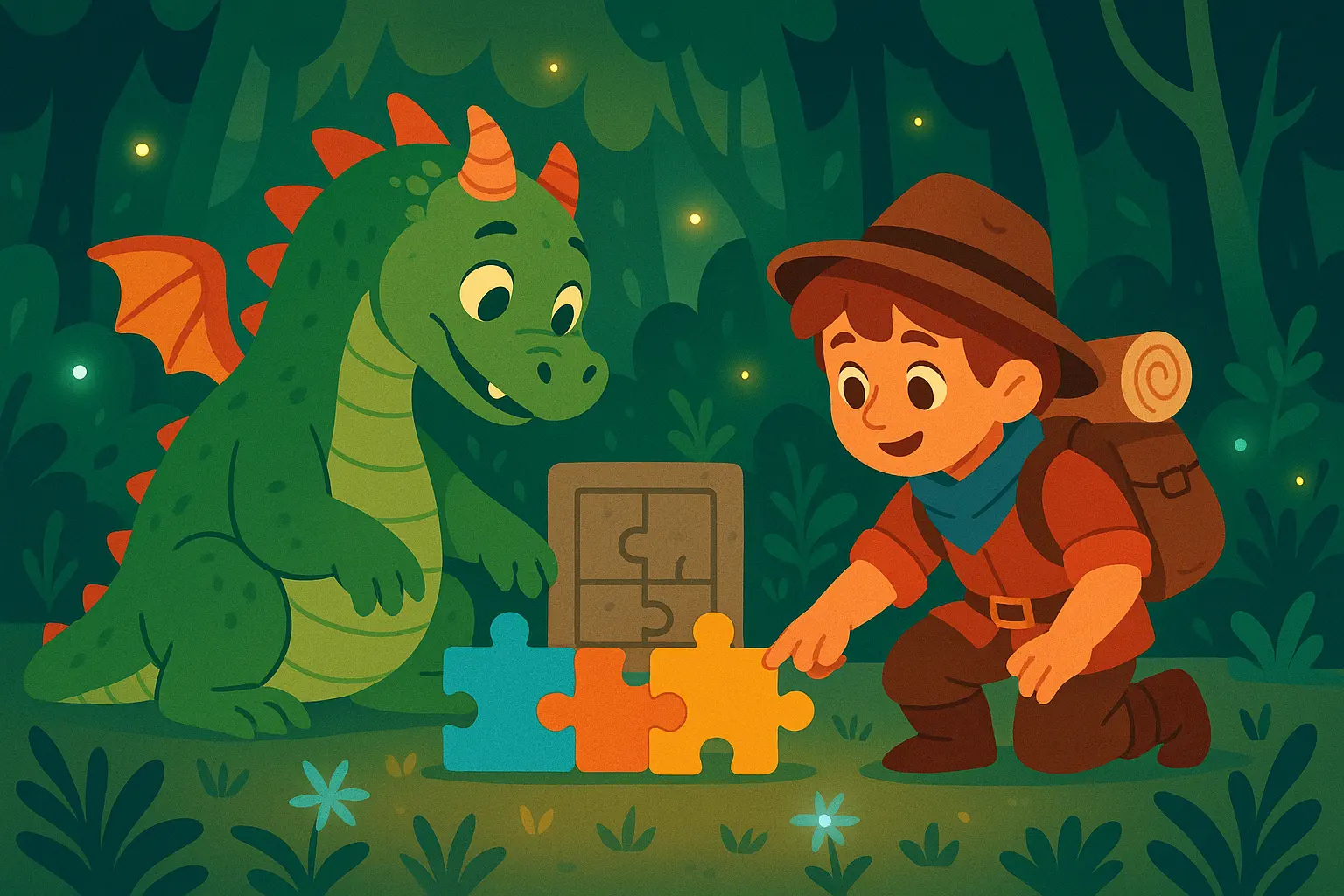
11. Enchanted Forest Stories Where Nature Is the Real Character
Stories set in magical woodlands where ordinary characters discover extraordinary abilities and learn important lessons about nature, friendship, and responsibility. The forest setting becomes a character itself, responding to the protagonists’ actions and reflecting their internal growth throughout the story.
These tales often feature strong ecological themes, showing how human actions affect natural environments and magical ecosystems. Characters develop deeper connections with nature while learning to balance their newfound abilities with ethical responsibility. The forest serves as both sanctuary and testing ground for personal development.
I love how these stories make kids think about their relationship with the natural world. They’re perfect for sparking conversations about environmental stewardship without being preachy about it.
12. Magical Kingdom Stories That Actually Make Sense
Tales of princes, princesses, and common folk navigating political intrigue, magical challenges, and personal growth in fantastical royal settings. Modern versions examine power structures, social responsibility, and the challenges of leadership while maintaining the grandeur and wonder of traditional kingdom stories.
These narratives frequently feature protagonists who must earn their positions through character development rather than just being born into royalty. Political conflicts require diplomatic solutions, magical problems demand creative thinking, and personal relationships drive plot development. The stories often address themes of justice, equality, and responsible governance.
If your kids love royal stories but you want something with more substance than “princess waits to be rescued,” these are perfect. They show that being a leader—whether royal or not—requires wisdom, compassion, and hard work.
13. Time-Traveling Fairy Tales That Blow Your Mind
Stories blend traditional fairy tale elements with time travel, allowing characters to visit different eras and learn from historical perspectives. These narratives create opportunities to explore how universal themes show up across different time periods while examining cause-and-effect relationships.
Time travel elements often serve character development by showing protagonists how their actions affect future outcomes. Characters might witness historical events, meet their ancestors, or see potential futures based on current choices. These stories frequently address themes of legacy, responsibility, and the importance of learning from history.
Pro tip: these work great for kids who love both fantasy and history. They’re sneaky educational while being genuinely entertaining.
Contemporary & Urban Fantasy
These four modern categories transplant magical elements into familiar contemporary settings, creating engaging narratives that explore how wonder and enchantment can exist within urban environments, schools, digital spaces, and suburban communities. They’re perfect for kids who want magic but in settings they can relate to.
14. Modern City Fairy Tales That Make Magic Feel Real
Stories transplant fairy tale elements into urban settings, exploring how magic might exist in contemporary metropolitan environments. Subway systems become underground kingdoms, rooftop gardens hide fairy communities, and street art comes alive with magical properties.
Characters navigate both everyday challenges (rent, jobs, relationships) and magical ones (curses, enchanted objects, supernatural creatures) while learning that magic exists in community connections, creative expression, and acts of kindness. These stories often address urban issues like gentrification, social isolation, and economic inequality through fantastical frameworks.
The best part about these stories is how they make kids look at their own cities differently. Suddenly that weird mural on the corner might be hiding something magical, and the old lady who feeds pigeons might know more than she’s letting on.
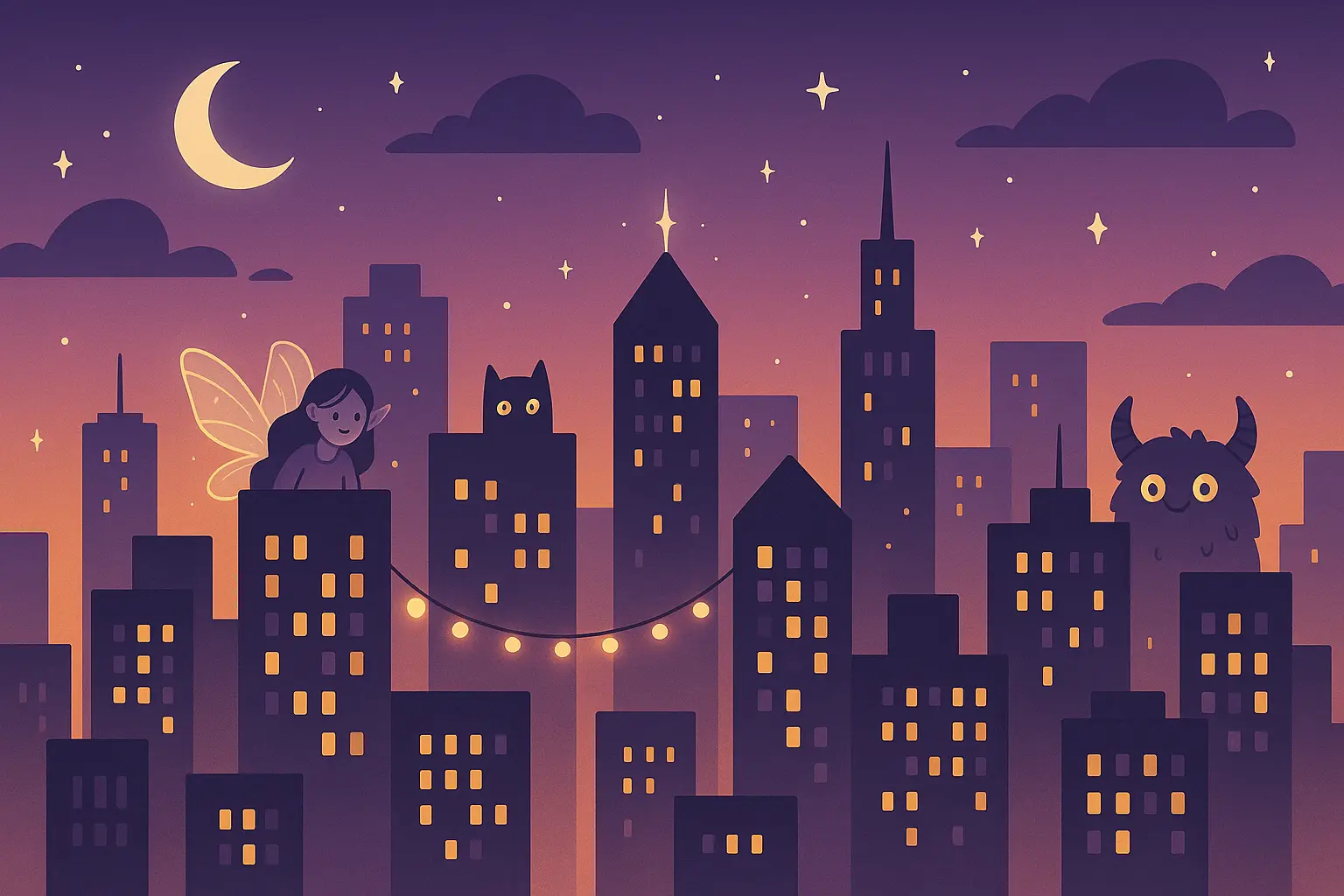
15. School-Based Magical Stories Every Kid Can Relate To
Tales set in educational institutions where students discover magical abilities, face supernatural challenges, and learn important lessons about friendship and responsibility. The school setting provides natural structure for character development and conflict resolution while addressing familiar academic and social pressures.
These stories parallel real school experiences—dealing with bullies, academic pressure, social hierarchies, and figuring out who you are—while adding magical elements that make challenges feel more manageable and solutions more creative. Teachers might be mentors with special knowledge, and extracurricular activities could involve magical training or supernatural problem-solving.
“The School for Good and Evil” series by Soman Chainani is a perfect example. It places fairy tale characters in an academic setting where students train to become heroes or villains. The school environment allows for exploration of friendship dynamics, moral complexity, and personal growth while maintaining magical elements. Students navigate both typical school challenges and magical curricula, creating scenarios that feel both relatable and fantastical.
16. Digital Age Fairy Tales for Screen-Time Kids
Stories incorporate technology, social media, and digital communication while maintaining the heart and moral lessons of traditional fairy tales. The “magic mirror” becomes Instagram or TikTok, enchanted objects might be apps or devices, and curses could manifest as viral content or digital addiction.
These narratives address contemporary challenges like cyberbullying, online privacy, digital literacy, and balancing virtual and real-world relationships. Characters learn to navigate digital spaces safely while maintaining authentic connections and personal values. The stories explore how technology can both isolate and connect people.
If you’ve ever tried explaining why Cinderella couldn’t just text the prince, you’ll appreciate how these stories make fairy tale logic work in our connected world.
17. Suburban Magic That’s Hiding in Plain Sight
Tales find extraordinary elements in ordinary suburban life, showing how magic can exist in everyday family situations and neighborhood dynamics. Backyard gardens might hide portals to other worlds, garage sales could offer genuinely magical items, and neighborhood pets might possess special abilities.
These stories celebrate the wonder that can be found in familiar environments while addressing common suburban experiences like family relationships, community connections, and personal growth. The magic often emerges from human connections, creative expression, or moments of genuine kindness and understanding.
I love these because they help kids see that magic doesn’t require castles or distant kingdoms—it can be right in their own backyard if they know how to look for it.
Interactive & Educational Stories
These four educational categories combine entertainment with targeted learning objectives, offering readers opportunities to develop critical thinking skills, scientific understanding, environmental awareness, and emotional intelligence through engaging interactive narratives that actually make learning fun.
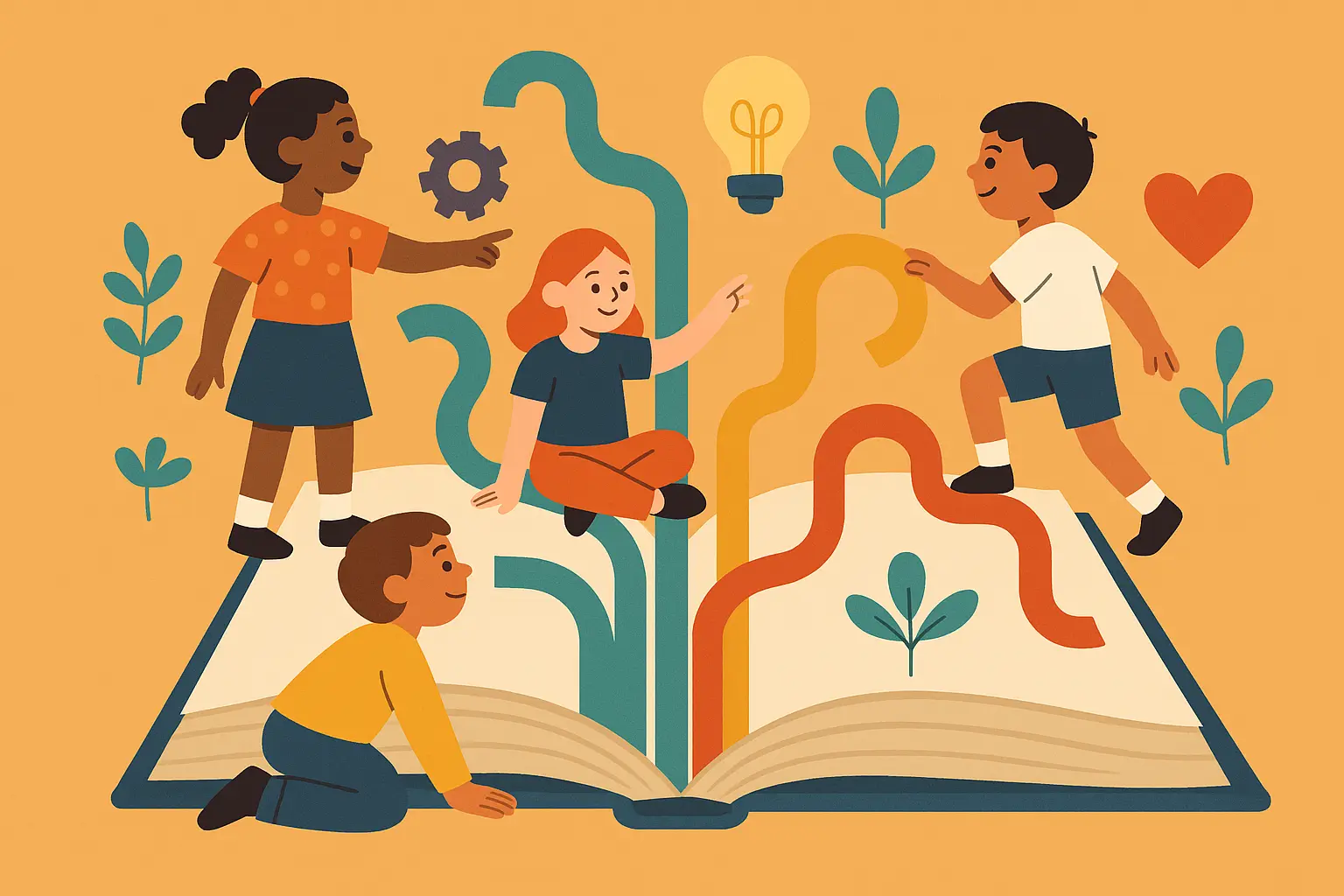
18. Choose Your Own Adventure Fairy Tales That Put Kids in Control
Interactive stories allow readers to make decisions affecting plot outcomes, teaching critical thinking and consequence awareness. Each choice leads to different plot developments, letting readers explore various problem-solving approaches and their results while staying engaged through active participation.
Modern versions often include diverse representation, multiple “successful” endings based on different values, and reflection questions that help readers process their decision-making strategies. The interactive format encourages readers to consider multiple perspectives and understand how different choices lead to different outcomes.
Fair warning: interactive stories can take forever because kids want to try every single option. But that’s actually the point—they’re learning by exploring all the possibilities.
For readers interested in creating their own interactive narratives, exploring short story examples can provide inspiration for branching storylines and character development.
19. STEM-Enhanced Fairy Tales That Make Learning Sneaky
Stories incorporate science, technology, engineering, and math concepts into traditional fairy tale frameworks, making learning engaging and accessible. Jack might learn about plant biology and structural engineering while climbing his beanstalk, or Goldilocks could explore concepts of measurement and proportion with those three bears.
These narratives integrate scientific method and mathematical reasoning into problem-solving scenarios while maintaining story engagement. Characters use STEM knowledge to overcome challenges, and readers learn alongside protagonists through hands-on discovery and experimentation within the story context. It’s sneaky learning at its best.
“The Wild Robot” by Peter Brown shows how STEM concepts can be woven into compelling narratives. The story follows Roz, a robot who must learn to survive on a wild island, incorporating engineering principles, animal behavior science, and environmental adaptation. Readers learn about ecosystems, problem-solving methodologies, and technological design while following an emotionally engaging story about belonging and friendship.
20. Environmental Awareness Tales That Inspire Action
Stories address climate change, conservation, and environmental responsibility through fairy tale narratives that inspire action and awareness. Traditional forest settings become opportunities to explore ecosystem relationships, while magical creatures might represent endangered species or environmental forces.
These tales often feature protagonists who must solve environmental problems through understanding natural systems and making sustainable choices. The stories balance educational content with emotional engagement, helping readers develop both knowledge and motivation for environmental stewardship.
My friend Sarah, who teaches second grade, swears by these environmental fairy tales for getting kids excited about nature and conservation. They work because they make environmental issues feel manageable and show kids they can make a difference.
21. Social-Emotional Learning Stories That Help Kids Navigate Feelings
Tales specifically designed to help children understand and manage emotions, develop empathy, and navigate social relationships effectively. Characters face realistic social challenges while learning to identify feelings, communicate needs, and resolve conflicts peacefully.
These stories often include clear emotional vocabulary and coping strategies while maintaining narrative engagement through relatable characters and situations. The fairy tale framework makes difficult topics more approachable while providing safe spaces to explore complex emotions and social dynamics.
They’re perfect for sparking conversations about feelings and relationships without feeling like a therapy session disguised as story time.
Original & Innovative Stories
These four categories push creative boundaries by reimagining fairy tale conventions, exploring unconventional perspectives, and creating entirely new mythologies that challenge traditional storytelling expectations while maintaining the wonder and wisdom that make once upon a time stories timeless.
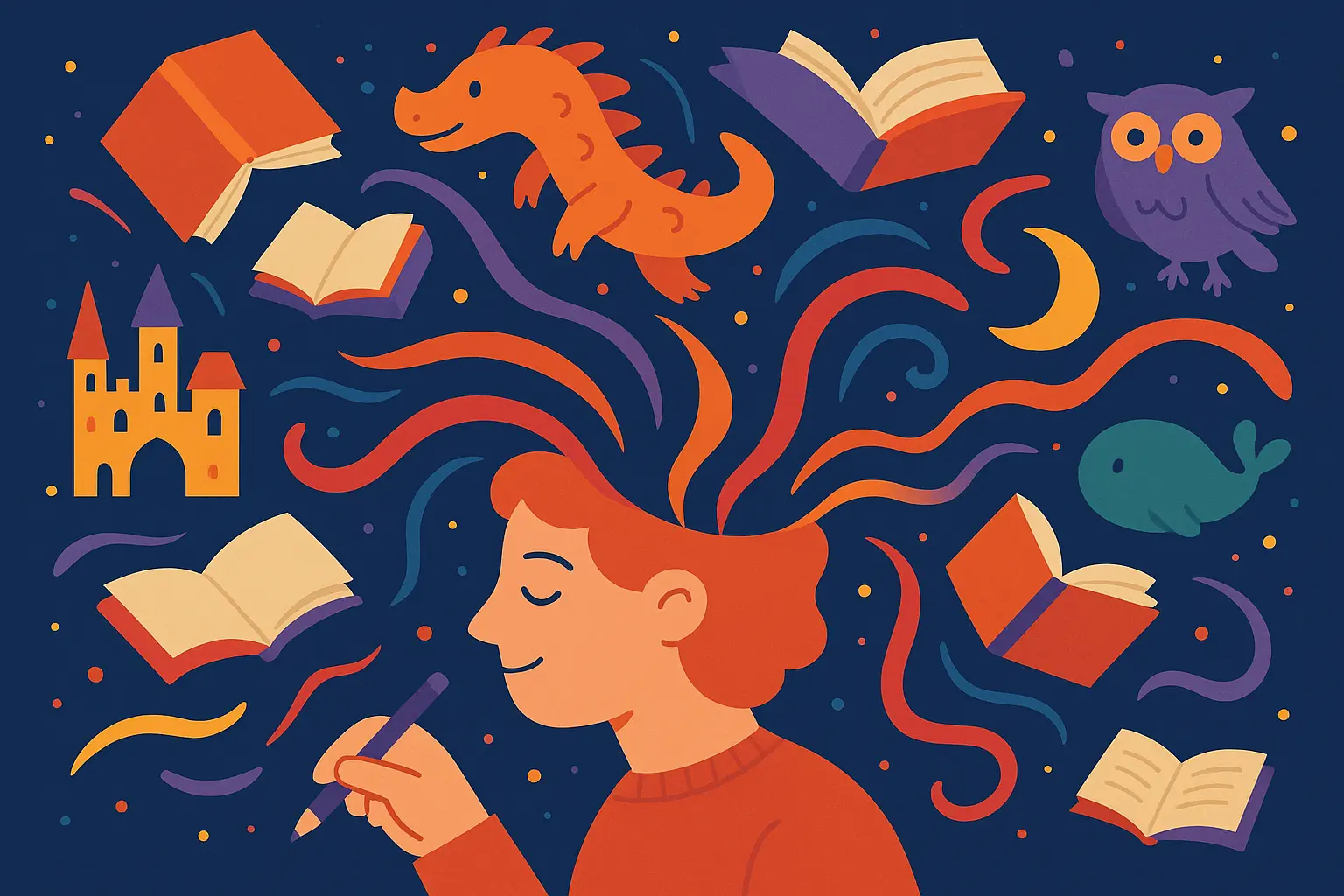
22. Fractured Fairy Tales That Mess with Your Head (In the Best Way)
Stories deliberately flip traditional fairy tale expectations through humor, role reversals, and unexpected plot twists that challenge conventional wisdom while maintaining entertainment value. These narratives often present familiar characters in unfamiliar situations or reveal “untold” perspectives from secondary characters.
Look, I was skeptical about fractured fairy tales at first, but they’re actually genius. They encourage critical thinking about traditional narratives and their underlying assumptions. Readers learn to question established stories and consider alternative viewpoints while enjoying creative and often hilarious reinterpretations of beloved tales.
The fractured approach helps kids realize that there are always multiple ways to look at any situation, which is a pretty valuable life skill.
23. Villain Perspective Stories That Will Change How You See Everything
Narratives told from the antagonist’s point of view reveal complex motivations and challenge readers’ assumptions about good and evil. These stories explore how circumstances, trauma, and societal pressures can shape character choices while maintaining moral complexity.
These villain perspective stories will mess with your head in the best way. They often reveal systemic injustices or personal tragedies that explain antagonistic behavior without excusing harmful actions. They encourage empathy and understanding while maintaining clear boundaries about what behavior is acceptable.
Kids love these because they finally get to understand why the “bad guys” do what they do, and it often turns out to be more complicated than they expected.
24. Genre-Blending Adventures That Break All the Rules
Stories combine fairy tale elements with other genres like science fiction, mystery, or horror to create unique narrative experiences that expand traditional boundaries. These hybrid tales might feature space-traveling princesses, detective fairy godmothers, or time-traveling witches solving contemporary problems.
The genre-blending approach attracts readers who might not typically enjoy fairy tales while introducing new audiences to classic story structures and themes. These narratives show how traditional elements can be adapted to serve different storytelling purposes and reach different audiences.
They’re perfect for kids who think fairy tales are “babyish” but love sci-fi or mystery stories.
25. Completely Original
25. Completely Original Mythologies That Create New Worlds
Authors create entirely new fairy tale worlds with unique magical systems, cultural frameworks, and mythological backgrounds that feel both fresh and timeless. These stories establish new traditions while honoring the essential elements that make fairy tales compelling.
Original mythologies allow for complete creative freedom while requiring sophisticated world-building skills. They offer readers entirely new story experiences while maintaining the archetypal elements that make fairy tales psychologically satisfying and culturally significant.
These are perfect for advanced readers who want something completely different but still magical and meaningful.
How These Stories Really Stack Up
Here’s the real deal about how each type of story performs when you’re trying to choose what works best for your situation. I’ve learned this through trial and error, lots of reading sessions, and paying attention to what actually engages kids versus what just sounds good in theory.
|
Story Category |
Story Flow |
Works for Different Ages |
Respectful Representation |
Good Writing |
Deeper Meaning |
Learning Value |
|---|---|---|---|---|---|---|
|
Classic Retellings |
Really Good |
Works for Almost Everyone |
Hit or Miss |
Usually Strong |
Lots to Think About |
Pretty Good |
|
Multicultural Stories |
Pretty Good |
Good Range |
Excellent (When Done Right) |
Usually Strong |
Lots to Think About |
Really High |
|
Fantasy Adventures |
Really Good |
Good Range |
Okay |
Depends on the Story |
Some Depth |
Okay |
|
Contemporary Urban |
Okay |
Limited Age Range |
Usually Good |
Depends on the Story |
Lots to Think About |
Okay |
|
Interactive Educational |
Okay |
Great for Target Ages |
Usually Good |
Okay |
Some Depth |
Excellent |
|
Original Innovative |
Totally Depends |
Works Best for Older Kids |
Totally Depends |
Really Depends |
Usually Deep |
Not Much |
Story Flow & How Well They Actually Work
Classic retellings nail the familiar structure while offering fresh perspectives. They score high on story flow because they use time-tested frameworks that feel comfortable while introducing innovative elements that surprise and engage. The challenge is making them feel contemporary and relevant without losing what made the originals work.
Multicultural stories often follow different patterns than Western fairy tales, which can initially challenge readers but ultimately enriches their understanding of how stories can work. They may follow circular rather than linear patterns, emphasizing community over individual achievement, which expands kids’ narrative literacy.
Fantasy adventures typically follow well-established quest narratives that provide clear structure and satisfying progression. The hero’s journey framework offers predictable satisfaction while allowing for creative variations in character development and world-building.
Contemporary urban fantasy balances familiar fairy tale elements with modern settings, creating engaging tension between magical and mundane. The juxtaposition requires careful handling to maintain believability while preserving wonder.
Interactive educational stories sacrifice some narrative flow for educational value, but well-crafted versions maintain engagement through meaningful choices and consequences. The branching structure can feel choppy if not expertly managed.
Original innovative stories may challenge traditional narrative expectations, requiring more sophisticated readers but offering unique and memorable experiences that push storytelling boundaries.

Age Range & Who They Actually Work For
Classic retellings can be adapted for any age group, with language complexity and thematic depth adjusted accordingly. They’re particularly valuable for introducing literary concepts and cultural literacy across developmental stages.
Multicultural stories offer excellent opportunities for cultural education across age groups, though some traditional versions may require contextual explanation for younger readers unfamiliar with cultural references or storytelling conventions.
Fantasy adventures typically appeal most to middle-grade through adult readers, offering scalable complexity based on target audience needs. The quest structure provides clear progression that younger readers can follow while allowing for sophisticated themes.
Contemporary urban fantasy works best for readers familiar with modern urban environments and technology, typically middle-grade through adult. The cultural references and technological elements may not resonate with very young audiences.
Interactive educational stories can be designed for specific age groups and learning objectives, making them highly targeted educational tools. The interactive format particularly appeals to kids who expect participatory experiences.
Original innovative stories often require more sophisticated reading skills and cultural knowledge, making them most appropriate for advanced middle-grade through adult readers who can appreciate narrative experimentation.
Cultural Representation & Not Screwing It Up
Classic retellings vary widely in their approach to cultural sensitivity, with modern versions increasingly addressing problematic elements in traditional stories. Authors must balance respect for source material with contemporary values and inclusive representation.
Multicultural stories score highest when created by or in consultation with cultural community members, offering authentic representation and avoiding appropriation. These narratives provide windows into different cultural perspectives while celebrating universal human experiences.
Fantasy adventures can create inclusive fantasy worlds that welcome diverse characters and perspectives, though traditional versions may require updating to reflect contemporary understanding of representation and inclusion.
Contemporary urban fantasy offers excellent opportunities for diverse representation in familiar modern settings. The urban environment naturally accommodates multicultural characters and experiences while maintaining relatability.
Interactive educational stories can be designed to include diverse characters and perspectives, making them valuable tools for inclusive education. The interactive format allows for multiple character options and varied cultural contexts.
Original innovative stories often lead in representation innovation, creating new models for inclusive storytelling that challenge traditional assumptions about character types and narrative perspectives.
|
What to Look For |
Questions to Ask Yourself |
Red Flags to Avoid |
Green Flags to Look For |
|---|---|---|---|
|
Cultural Authenticity |
Who wrote this? Did they work with people from the culture? |
Stereotypical portrayals, surface-level cultural details |
Author from culture or extensive cultural consultation |
|
Right Age Fit |
Does this match my kid’s developmental stage? Can they handle the emotions? |
Too complex themes, inappropriate content |
Age-matched language and concepts, respectful treatment |
|
Learning Integration |
Does the lesson feel natural or forced? |
Heavy-handed messaging, obvious educational agenda |
Natural learning integration, organic moral development |
|
Writing Quality |
Is this actually well-written? Do the characters feel real? |
Flat characters, poor pacing, weak dialogue |
Rich character development, engaging prose, strong structure |
Writing Quality & Whether It’s Actually Good
Classic retellings benefit from time-tested story structures but require skilled adaptation to feel fresh and relevant. The challenge lies in honoring source material while creating something genuinely new and engaging.
Multicultural stories often feature rich oral tradition elements that enhance literary quality through rhythm, repetition, and cultural depth. These narrative techniques can elevate prose quality when skillfully employed.
Fantasy adventures can showcase excellent world-building and character development skills when well-executed. The genre demands creative imagination balanced with internal consistency and believable character motivations.
Contemporary urban fantasy requires sophisticated balancing of realistic and magical elements to maintain believability. Authors must ground fantastical elements in recognizable contemporary contexts without losing narrative magic.
Interactive educational stories face the challenge of maintaining literary quality while serving educational objectives. The best examples integrate learning seamlessly into compelling narratives rather than feeling like disguised lessons.
Original innovative stories can demonstrate exceptional creativity and literary innovation when successfully executed. These narratives often push artistic boundaries while maintaining reader engagement and emotional resonance.
Deeper Meaning & Why It Actually Matters
Classic retellings can address timeless themes through contemporary lenses, making ancient wisdom relevant to modern readers. They excel at connecting universal human experiences across time periods and cultural contexts.
Multicultural stories offer perspectives on universal themes through diverse cultural frameworks, enriching readers’ understanding of how different societies approach common human challenges and celebrations.
Fantasy adventures explore themes of courage, friendship, and personal growth through exciting, accessible narratives. The fantastical elements allow for metaphorical exploration of real-world challenges and moral dilemmas.
Contemporary urban fantasy directly addresses modern challenges while maintaining the hope and wonder of traditional fairy tales. These stories can tackle current issues like technology addiction, urban isolation, or environmental concerns.
Interactive educational stories can tackle specific contemporary issues like digital citizenship, environmental awareness, or social-emotional learning. The interactive format encourages active engagement with thematic content.
Original innovative stories often push thematic boundaries, exploring complex contemporary issues through innovative narrative approaches that challenge readers’ assumptions and expand their perspectives.
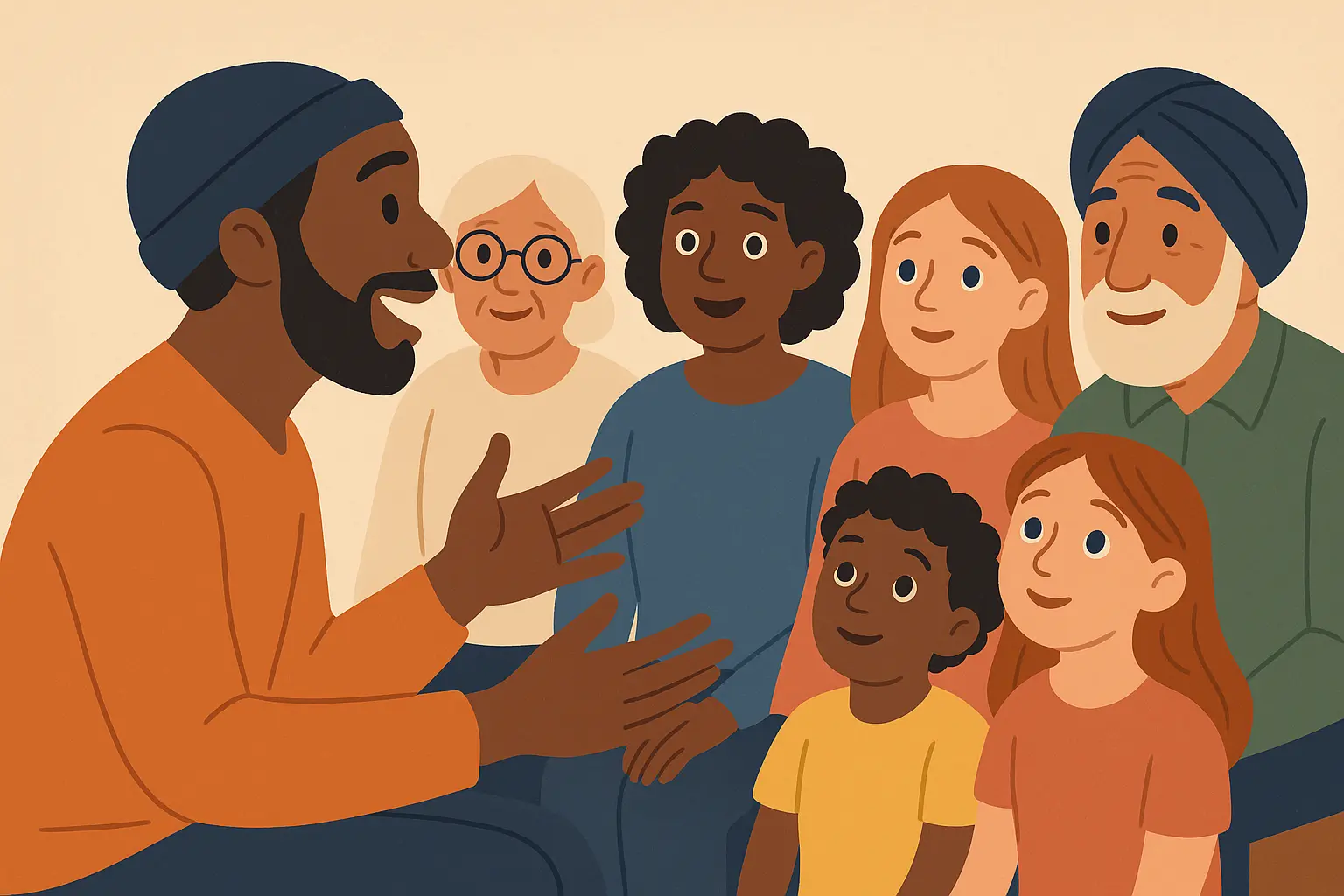
Transform Your Storytelling with Nairrate
Nairrate’s AI-powered storytelling tools can help you discover, create, and customize once upon a time stories that perfectly match your audience needs, whether you’re seeking educational content, entertainment, or creative inspiration for your own narrative projects.
Look, I get it. You’re either a parent trying to find the perfect bedtime story, a teacher hunting for engaging classroom material, or a writer trying to craft your own fairy tale. Finding the right story can make your head spin. You might be stuck with stories that don’t quite fit your audience’s needs, lack representation that matters to your kids, or fail to address the specific learning goals you have in mind.
Writers looking to develop their own fairy tale narratives can benefit from understanding how to write a story using proven psychological principles that make stories memorable and impactful.
Here’s where Nairrate’s AI-powered tools can actually help transform your storytelling experience. Need a fairy tale that incorporates science concepts for your STEM-loving kid? Or a multicultural story that represents your students’ diverse backgrounds? The AI can help craft narratives that balance educational value with genuine entertainment.
For creative writers, Nairrate serves as your collaborative partner in developing fresh takes on familiar fairy tale tropes, creating diverse characters that break traditional stereotypes, and crafting dialogue that feels both timeless and contemporary. You can generate multiple story variations, develop choose-your-own-adventure branches, or create prompts that encourage audience participation.
Parents and educators can also explore our best ai story tools to discover additional resources for creating personalized narratives that engage young readers.
Ready to discover your perfect once upon a time story? Start exploring Nairrate’s story generation tools today and unlock the magic of personalized storytelling that speaks directly to your audience’s hearts and minds.
Final Thoughts
The world of once upon a time stories has grown way beyond traditional fairy tales to include diverse voices, innovative formats, and contemporary themes that speak to modern audiences while keeping that timeless magic that makes these stories stick with us. From classic retellings that give familiar characters fresh life to multicultural stories that expand our understanding of universal themes, each category offers unique strengths and serves different needs.
Your choice should align with what you’re actually trying to accomplish—whether that’s pure entertainment, education, cultural awareness, or creative inspiration. Think about your audience’s age, cultural background, and what they need to learn or experience. Consider the story’s structure, representation, and deeper meaning. The most effective stories balance familiar comfort with fresh perspectives, creating narratives that satisfy expectations while surprising readers with innovative approaches.
Here’s the thing—there’s no perfect story for every situation. Some nights you’ll nail it with an amazing tale that sparks great conversations about courage, friendship, or standing up for what’s right. Other nights you’ll wing it with a story about a magical pizza slice who saves the day (yes, I’ve been there). The point is showing up and sharing stories together.
Remember that the best once upon a time stories create connections—between you and your audience, between past and present, between different cultures and perspectives. They remind us that despite our differences, we share common hopes, fears, and dreams that transcend time and geography. Whether you choose a classic retelling or an innovative original story, you’re participating in humanity’s oldest tradition: sharing stories that help us understand ourselves and our world a little better.
Start with what feels comfortable, then branch out when you’re ready. And remember, even the “failed” stories usually become the ones kids remember most fondly later. The magic isn’t just in the perfect story—it’s in the time spent together, the conversations that follow, and the imagination that gets sparked along the way.



Add comment